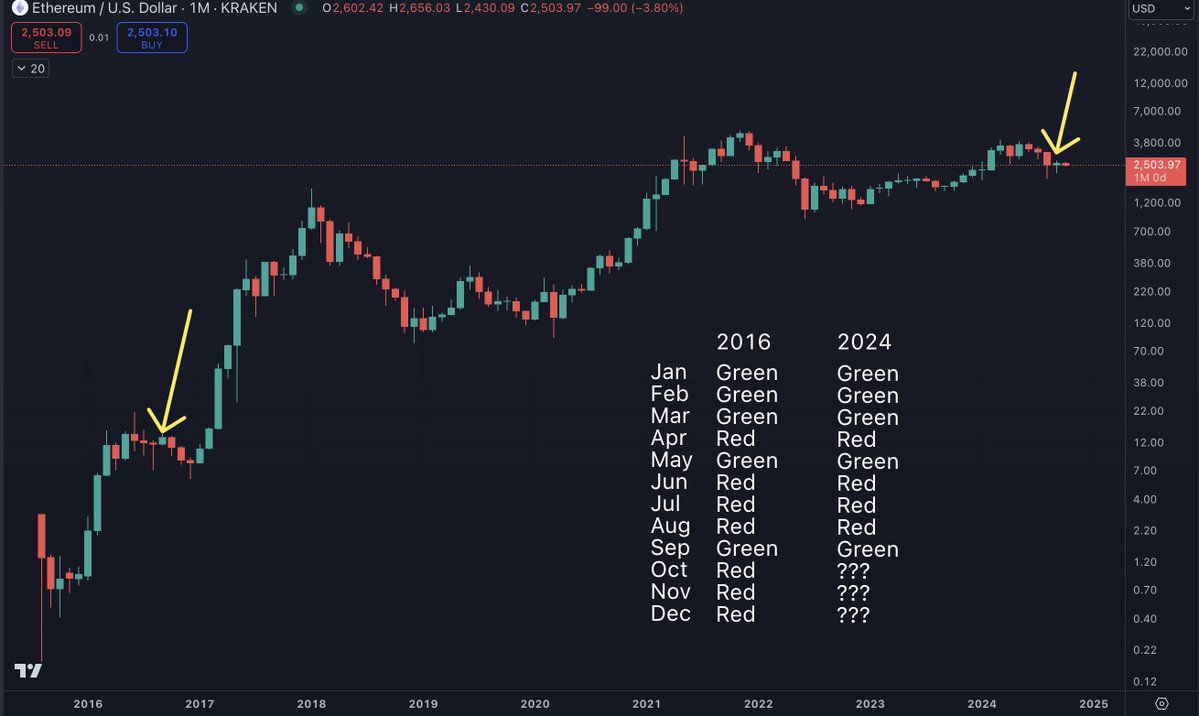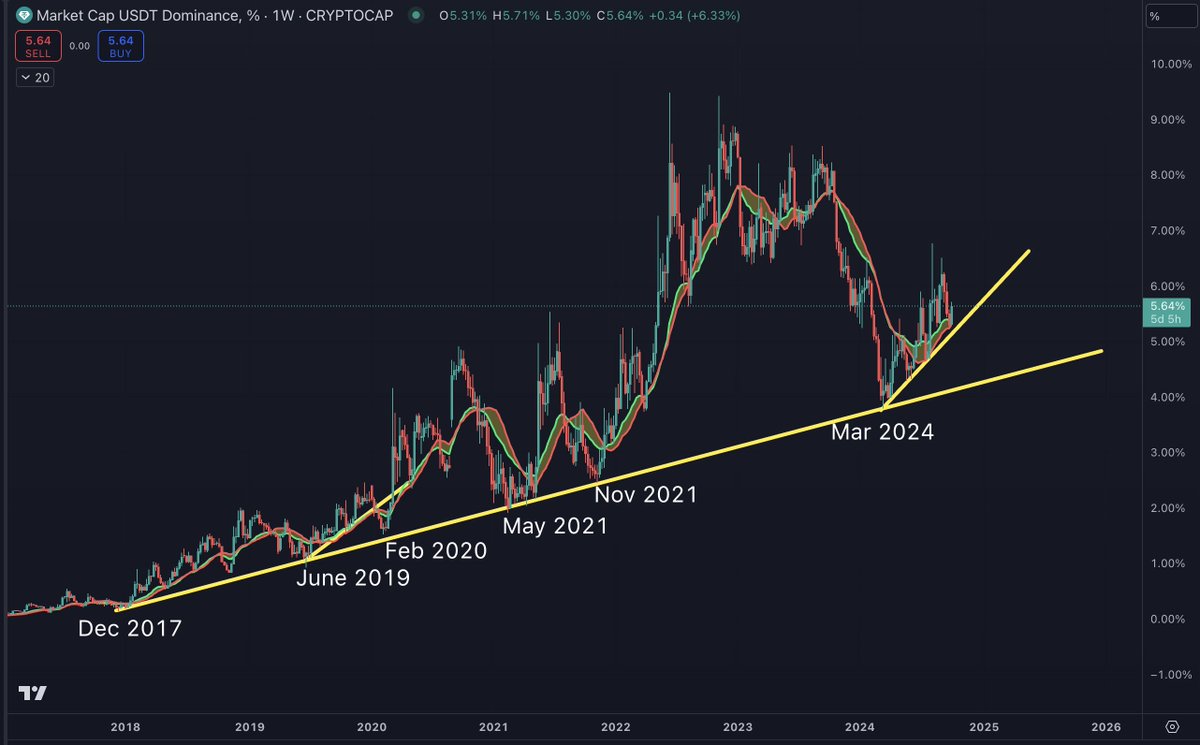Popular crypto analyst Benjamin Cowen is warning that Ethereum (ETH) could suddenly turn bearish in the last three months of the year.
Cowen tells his 861,500 followers on the social media platform X that ETH may be repeating a similar 2016 pattern on the monthly timeframe that could have it seeing red in the fourth quarter.
However, he says if ETH follows a similar pattern, it may put up big gains in the first half (H1) of next year.
“With ETH going green in September, the 2016 pattern is still tracking. If it continues to play out, it would mean Q4 is red, followed by green H1 2025. Q4 2019 was also red for ETH, but October was slightly green. Trends can change, but worth following until it deviates.”

Ethereum is trading for $2,375 at time of writing, down 3.3% in the last 24 hours.
Next up, the analyst suggests that Tether Dominance (USDT.D) may have to break below the trend line on the weekly timeframe for Bitcoin (BTC) to start rallying because it would indicate market participants are using their stablecoins to accumulate crypto assets. According to Cowen, a declining percentage of Tether’s market cap relative to other cryptocurrencies has a historic relationship with Bitcoin uptrends.
“I posted USDT dominance hitting its long-term trend line on March 14th, 2024, which was the local top for BTC. We all have a way of convincing ourselves that this time is different, but USDT dominance has been putting in higher lows ever since. This trend line needs to break before any real future rally can begin.”

Lastly, the analyst shares a chart of the logarithmic regression band of crypto’s market cap, which is designed to track the fair value of an asset class using “non-bubble data.” He says that based on historical precedence the crypto market may not soar past fair value into the overvalued area until early next year.
“Last cycle, we went durably overvalued by the end of the halving year. But the cycle before that, it wasn’t until the first or second quarter of 2017. The cycle before that, it wasn’t until the first quarter of 2013. So again, we might experience a market that doesn’t durably go overvalued until potentially next year. And if it did that, it wouldn’t really be out of the ordinary. It would actually still be in line with what we saw the cycles do previously.”

Generated Image: Midjourney
 dailyhodl.com
dailyhodl.com
